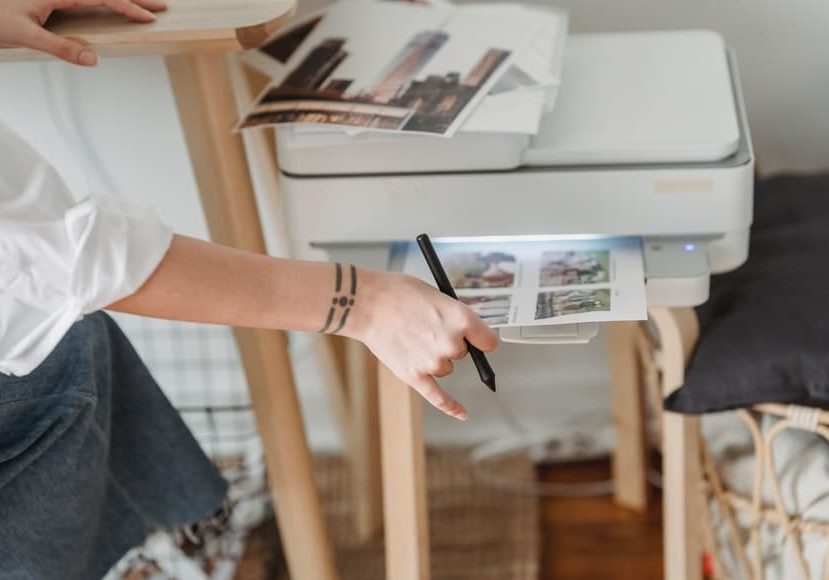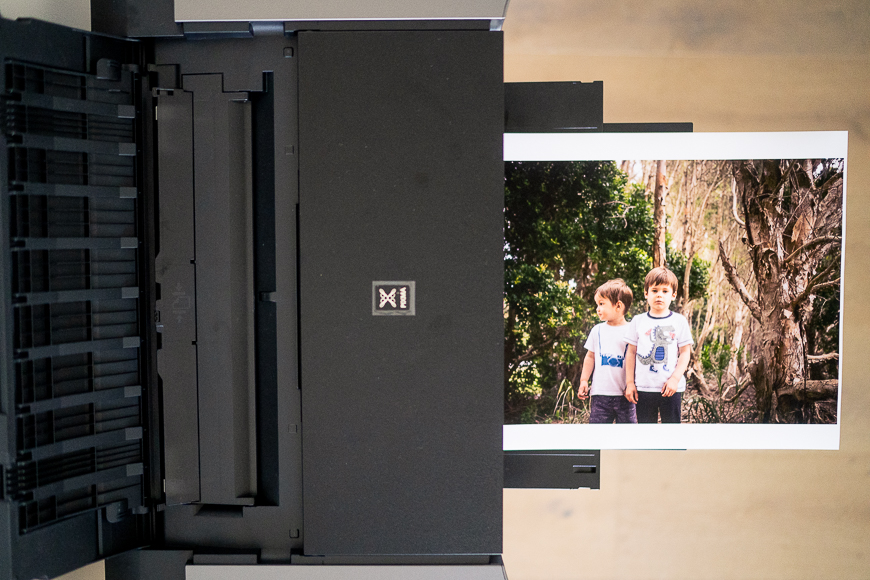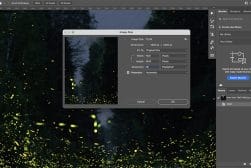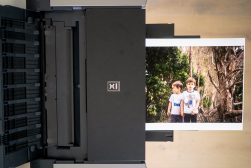
DPI vs PPI: What’s the Difference? (Printing & Scanning in 2024)
When printing or scanning your photos, it's important to learn about the difference between DPI and PPI. Learn everything in our simplified guide.
Learn | By Ana Mireles
You may have come across the terms Dots Per Inch (DPI) and Pixels Per Inch (PPI) when describing digital image resolution.
Although the terms are used interchangeably, they are some key differences between DPI vs PPI:
- DPI is the number of printed dots within one inch (1″) of an image printed by a printer.
- PPI is the number of pixels within one inch (1″) of an image displayed on a computer monitor.
Understanding the difference between DPI and PPI is key to photographers or anyone who needs to print out a digital photo.
This guide will help explain everything so you can be confident about scanning or printing your photos.
PPI Resolution Explained
What does PPI mean?
PPI stands for pixels per inch. To understand what PPI is, let’s start by explaining what a pixel is.
A digital image is formed by tiny squares called pixels that contain only one color. When you zoom out or stand further away, you stop seeing the pixels and see the image as a whole.
If you multiply the number of pixels from the image width by the number of pixels from the image height, you’ll know the total pixel count, which gives you the image’s resolution.
For example, if you have a digital image size of 6960 px by 4640 px, it means that you have a 32.5-megapixel image. You can spread those pixels in any way you want and change the photo’s physical size.
So, if you were to put 300 pixels per inch (i.e., 300 PPI) you would have a printed image that’s 23.2 x 15.4 inches. If instead, you set it at 150 PPI, then the printed image would be twice the size.
So, what you’re doing is changing the pixel density and not changing the number of pixels of the digital image. You can use any photo editing program to see how many pixels there are in your photo.
For example, to change DPI in Adobe Photoshop, you need to go to the menu Image > Image size. Here you’ll see the Pixel Dimensions, which tells you the number of pixels on the width and height. The total amount of pixels is under Image Size, which is expressed in MP (megapixels).
If you want to change the PPI, I’ll explain how to do it in a dedicated section further down in the article.
When should you use PPI?
You should use PPI when you’re working with a digital image that’s related to physical support – like a monitor or a print.
In the previous section, I explained how PPI determines print size – by having the pixels closer together, the image is smaller than it would be if you spread the pixels further apart from each other.
However, you can also use PPI when you’re talking about a display screen. For example, the MacBook Air 13.3″ Retina Display has a 2560 x 1600 screen resolution with a 227 PPI.
How to change your PPI
If you want to resize images, you are changing the PPI. This is OK if you’re downsizing – which means that you put more pixels per inch to achieve a smaller image size.
However, upsizing is not advisable because you’ll start to lose image quality, and you might end up with a pixelated image. If you really need a bigger image size, you can use dedicated software like Topaz Gigapixel AI to increase the image dimensions up to 6x.
Simply open your image file and determine the new size. You can do it by scaling to 0.5x, 2x, 4x, 6x, or custom – or you can use width and height.
If you choose the latter, input the new size in pixels, inches, or centimeters, and set the desired PPI. You can also adjust the “Suppress Noise” and “Remove Blur” features for a better result. It’s also possible to resize multiple images at a time – see our Gigapixel review to learn more about what it can do.
If you don’t want to spend money on a dedicated program, most image editing software can upscale pixel resolution, but not all of them are good at preserving image detail.
How Much Do You REALLY Know About Photography?! 🤔
Test your photography knowledge with this quick quiz!
See how much you really know about photography...

For example, in Photoshop, you need to go to the menu Image and select Image Size. In the pop-up window, input the new size values, check the “Resample” box, and choose “Preserve Details (Enlargement)” from the drop-down menu. There are different resampling methods, so feel free to try others and see which one gives you the best result.
You can also use the Enhance feature in Lightroom or Adobe Camera Raw (ACR) to double the size. You can access ACR by opening a raw file in Photoshop. You can also choose to edit a file in ACR from Adobe Bridge or use the ACR filter from inside Photoshop.
What is the Best PPI for Scanning Photos?
The best PPI depends on the size of the photo you’re scanning and how you’ll use it once it’s digital.
In most cases, you should be OK scanning at 300 or 600 PPI if you want to have high-quality prints. However, you should consider the size of the original image and the final image size that you’re looking for.
Let me give you an example. If you want to scan a postcard to make a print of the same size, you need to scan it at 300 PPI. However, if you’re going to print it at 8″ by 10″, you’ll need to scan it at 600 PPI. This is because a postcard’s size is 4″ by 6″.
On the other hand, 72 PPI or 96 PPI should be enough if you’re scanning for web images. Just make sure to invest in one of the best photo scanners or find the best online photo scanning service so that you’re creating the best quality archives and photo prints.
DPI Printing Explained
What does DPI mean?
DPI refers to how many ink dots a printer can print per inch – therefore, DPI means dots per inch.
The DPI and PPI don’t have to be the same. For example, you can send to the printer a 300 PPI photo – which is a high-resolution photo. Then, the printer can have a higher DPI setting, let’s say 600, to improve the quality. You can, however, convert PPI to DPI should you need it.
Each printer has its own unique DPI that depends on the brand, the model, and the type of printer. This means that the tiny dots of ink on each printer can have different sizes and patterns. The printing speed can also slow down to allow overlapping of the dots.
Inkjet printers range between 300 and 720 DPI, while laser printers range between 600 and 2400 DPI. Because they are unique, it’s difficult to rate the quality based only on the resolution. For example, it might be that the same photo printed on a 600 DPI resolution printer looks better than one printed on a 720 DPI printer.
Another thing that can affect the image quality of your print is the type of paper that you use. For example, some papers can create bleeding. Also, images printed on a glossy surface look sharper than those printed on canvas due to their texture.
When should you use DPI?
You should use dots per inch whenever you print a digital image. Also, scanners have the optical resolution expressed in DPI -even though they are referring to a digital document.
What DPI should I scan 35mm negatives?
Though scanners will tell you their DPI capabilities, PPI is really the most relevant factor to consider for digital scans.
To determine the best PPI for 35mm negatives or slides, you need to consider the print size that you want to get from it.
If you want to scan a 35mm negative to make a print that’s 5″ x 7″, you need to scan it at 1500 PPI. This is because 35mm film is roughly 1″ by 1.5″. So, to have 300 pixels per inch, you need a 1500 PPI scan.
DPI vs PPI: How Do They Relate to Each Other?
When you think about PPI vs DPI, you should remember that you’re talking about digital versus print. The DPI and the PPI relate when you want to print digital images.
DPI to PPI is, for the most part, 1:1. Difference between PPI and DPI is mainly the type of media they pertain to.
The PPI determines the print size because you have a limited amount of pixels on your image – so a greater pixel density means that the print will have enough details and sharpness.
If you use a photo with too few pixels, not even the best photo printers can deliver good print quality. So, for a higher quality print, you need to use a digital file with a high PPI.
What is the Maximum Size I Can Print a Photo?

Canon Pixma Pro A3 Printer – one of the best large format printers for the money.
The final print size depends on the image resolution. A higher resolution can handle a large print, while a low-resolution photo would be pixelated if you tried to enlarge it.
To determine how big you can print a picture, start by checking its resolution – in other words, its total pixel dimensions. Then, divide it by 300, which is the ideal PPI for printing.
Let’s say you have a photo that’s 6960 px by 4640 px, which is the size of an image produced by the Canon 90D. Then you can print it as big as 23.2 x 15.4 inches.
However, if you don’t need the highest quality, you can lower the PPI and make it bigger. Check with your printing lab on how to optimize your digital images for the specific use that you want to give them.
DPI vs PPI: FAQs
Is 300 PPI the same as 300 DPI?
They’re often used interchangeably. However, technically they aren’t the same thing – 300 PPI refers to a digital image or a computer screen while 300 DPI refers to a physical printer.
Is 300 PPI high resolution?
Yes, 300 PPI is considered a high-resolution photo, and it allows for good quality prints.
Is 300 or 600 DPI better?
Technically speaking, 600 DPI means more dots per inch – hence, more details. However, the picture quality is not based just on the resolution. Also, depending on how far away you’ll see the picture, you might not even notice the difference. For example, billboards are often printed at 30 DPI, and they look perfectly OK.
Should I scan photos at 300 or 600 DPI?
It depends on the photo’s original size and the final size you want to print. If you’re going to keep them in the same size, you can scan them at 300 PPI. If you’re going to enlarge them, then opt for 600 DPI or more.
Image Quality vs Digital Image Size: Final Words
As you can see, DPI and PPI are not the same things. However, they’re often used as if they are – which leads to a great deal of confusion.
I hope I was able to clear things up so that you can adequately determine which PPI and DPI you need when you want to scan, print, or display your photos.
If you have any questions or tips on handling pixel density and printer dots, please share them with us in the comments section.

Check out these 8 essential tools to help you succeed as a professional photographer.
Includes limited-time discounts.













